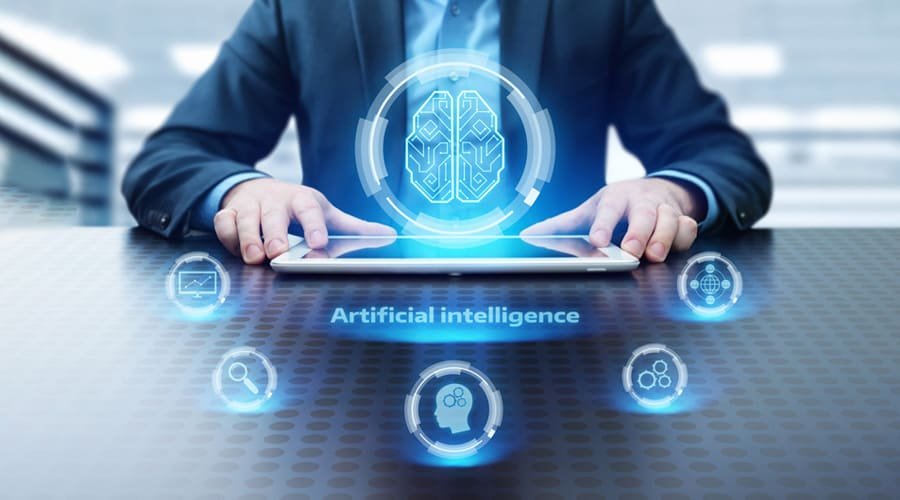Artificial Intelligence has crossed several milestones.
Copyright by www.analyticsinsight.net
 Artificial intelligence is the most disruptive technology of our times, transforming business processes and the world we live in. Enterprises are using AI to extract the maximum potential and improve the overall customer experience. AI trends for 2021 are aligned in the direction of innovation. Achievements are already being seen in the form of algorithms. For example, Google’s BRET transformer neural network is a new algorithm that promises to revolutionize NLP. In the same way, new tools are being developed for enterprises to automate machine learning tasks and accelerate innovation and solution development. AI is also advancing towards conceptual designs, smaller devices, and multi-model applications. Hence, it is important for tech organizations to be updated with what’s available new in technology.
Artificial intelligence is the most disruptive technology of our times, transforming business processes and the world we live in. Enterprises are using AI to extract the maximum potential and improve the overall customer experience. AI trends for 2021 are aligned in the direction of innovation. Achievements are already being seen in the form of algorithms. For example, Google’s BRET transformer neural network is a new algorithm that promises to revolutionize NLP. In the same way, new tools are being developed for enterprises to automate machine learning tasks and accelerate innovation and solution development. AI is also advancing towards conceptual designs, smaller devices, and multi-model applications. Hence, it is important for tech organizations to be updated with what’s available new in technology.
1. Automated Machine Learning
AutoML will bring in improved tools that will refine data labeling and neural net architectures. Labeling data is an essential component of the industries, which is now being outsourced to counties like India, Central Eastern Europe, and South America. Owing to the hectic shift in work brought by the Pandemic, companies are now looking for more days to avoid or minimize this part of the process. The advantage of automating the work of selecting and tuning a neural network model is that AI will become cheaply available and more new solutions can then be created.
2. AI-powered Conceptual Design
Traditionally, AI’s major applications lie in streamlining processes related to data, image, and language analysis. Industries including financial, retail, and healthcare used this technology to automate repetitive tasks. OpenAI’s recent developments will change this mindset. Known as DALL E and CLIP, these models will combine language and images to generate new visual designs by understanding text descriptions.
3. Supporting Multiple Learning Areas
With frequent advancements, AI’s ability to support multiple modes within a single ML model is improving. The technology can now leverage text, vision, speech, and IoT sensor data. Developers are also capitalizing on this ability and innovating various ways to better normal, mundane tasks. In the healthcare industry, patient data that is collected by healthcare systems include visual labs, clinical trial reports, and other documents. With the right layout style and presentation, it can help doctors understand the situation in a better way. AI models that can work with multi-modal techniques can do the job of presenting reports and improving medical diagnosis. […]
Read more: www.analyticsinsight.net


Artificial Intelligence has crossed several milestones.
Copyright by www.analyticsinsight.net
1. Automated Machine Learning
AutoML will bring in improved tools that will refine data labeling and neural net architectures. Labeling data is an essential component of the industries, which is now being outsourced to counties like India, Central Eastern Europe, and South America. Owing to the hectic shift in work brought by the Pandemic, companies are now looking for more days to avoid or minimize this part of the process. The advantage of automating the work of selecting and tuning a neural network model is that AI will become cheaply available and more new solutions can then be created.
2. AI-powered Conceptual Design
Traditionally, AI’s major applications lie in streamlining processes related to data, image, and language analysis. Industries including financial, retail, and healthcare used this technology to automate repetitive tasks. OpenAI’s recent developments will change this mindset. Known as DALL E and CLIP, these models will combine language and images to generate new visual designs by understanding text descriptions.
3. Supporting Multiple Learning Areas
With frequent advancements, AI’s ability to support multiple modes within a single ML model is improving. The technology can now leverage text, vision, speech, and IoT sensor data. Developers are also capitalizing on this ability and innovating various ways to better normal, mundane tasks. In the healthcare industry, patient data that is collected by healthcare systems include visual labs, clinical trial reports, and other documents. With the right layout style and presentation, it can help doctors understand the situation in a better way. AI models that can work with multi-modal techniques can do the job of presenting reports and improving medical diagnosis. […]
Read more: www.analyticsinsight.net
Share this: